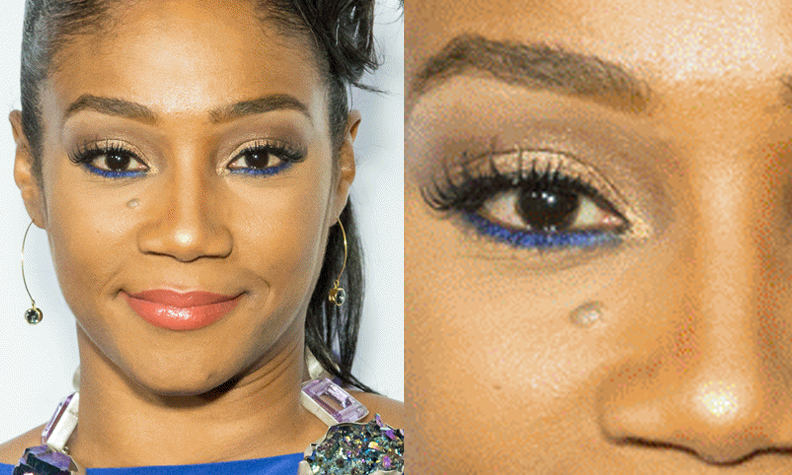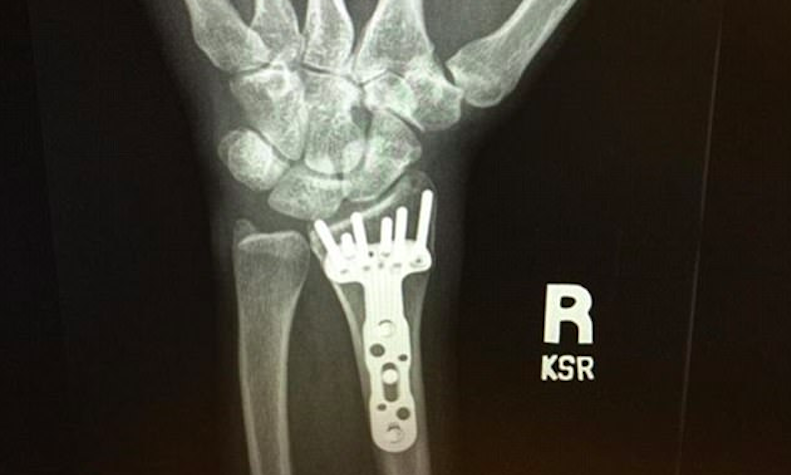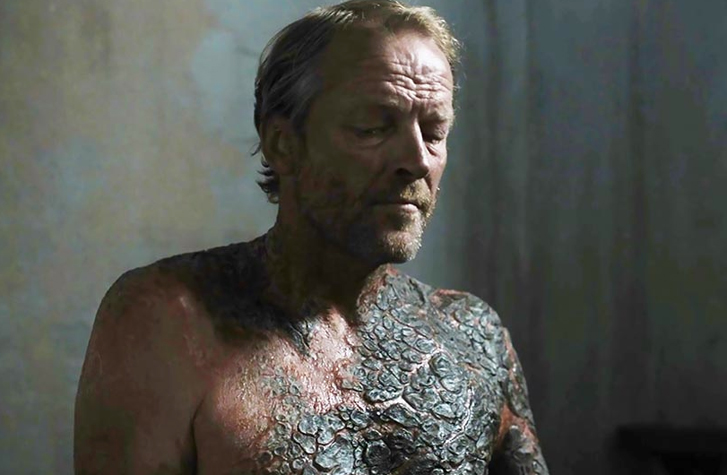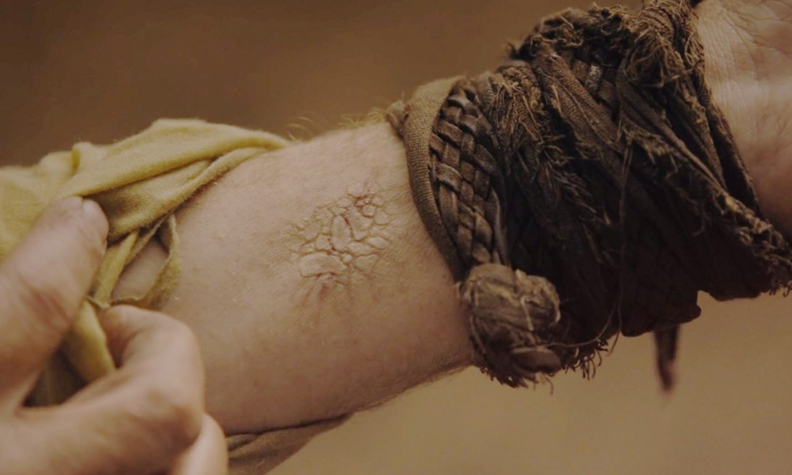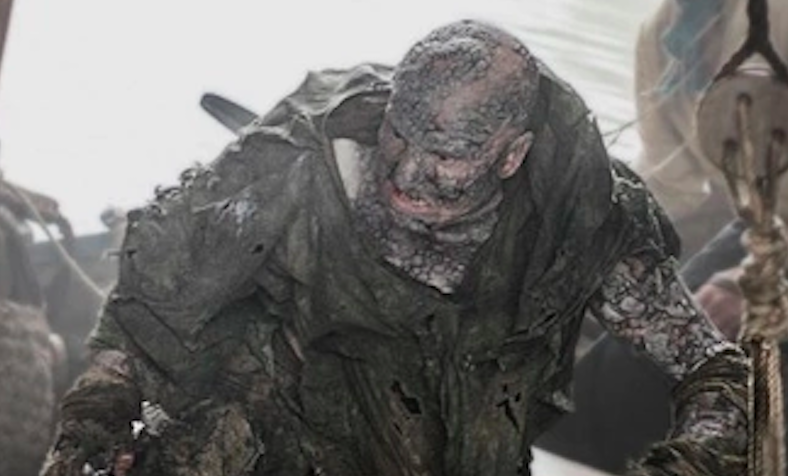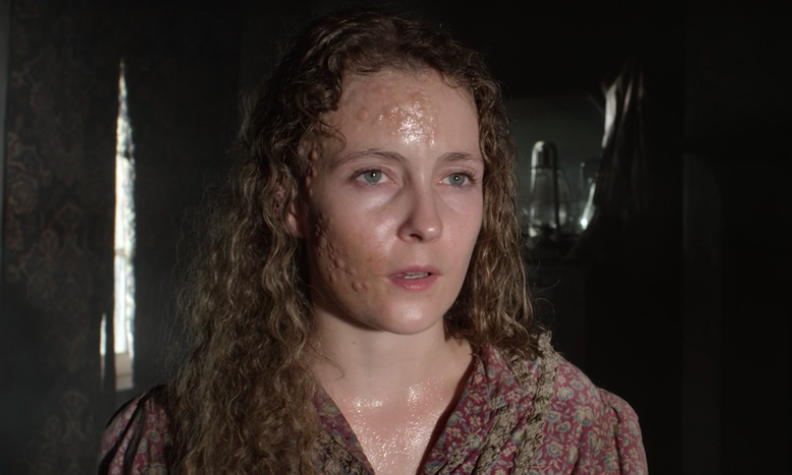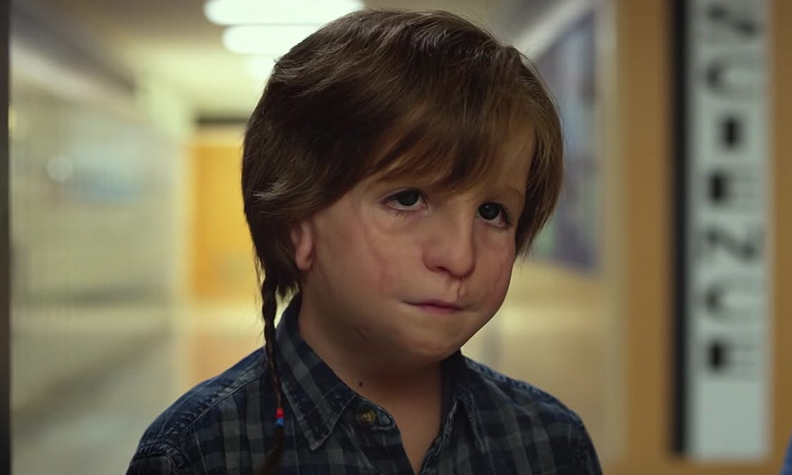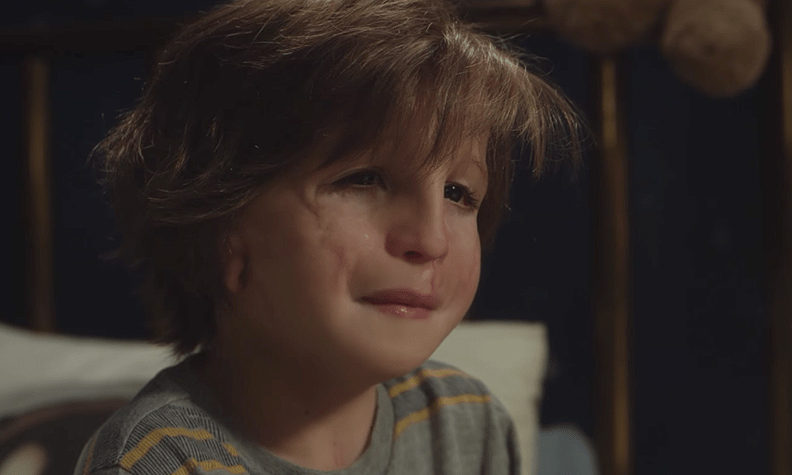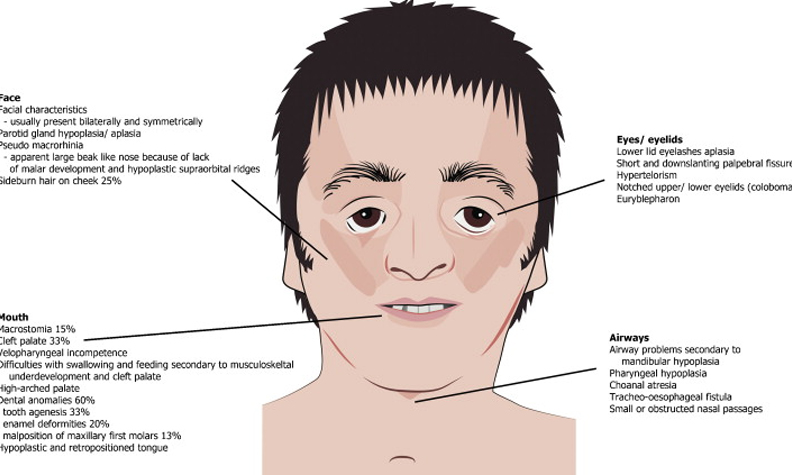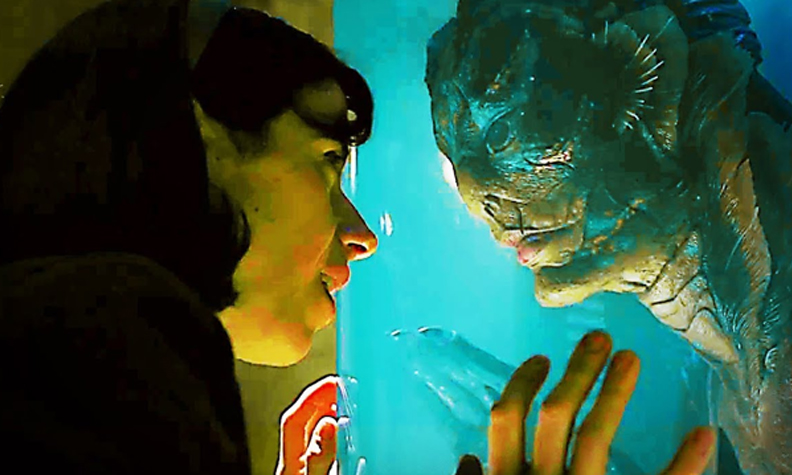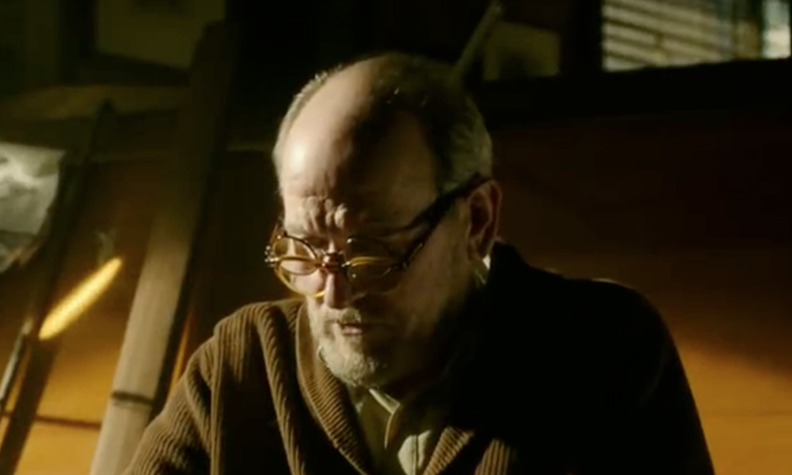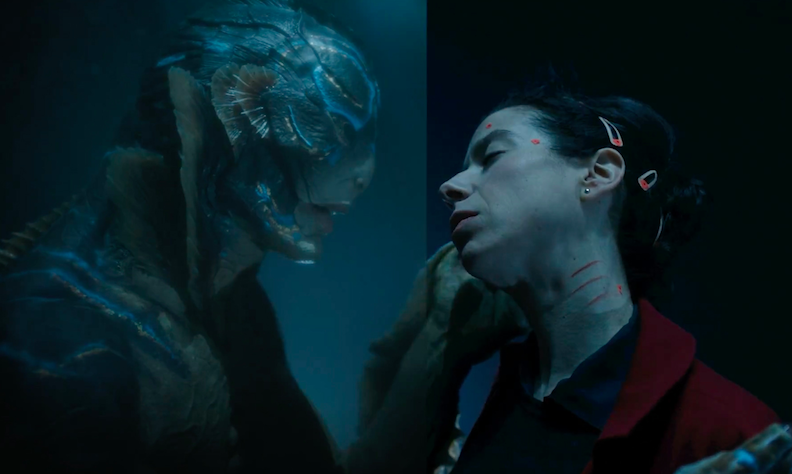Congratulations to all the winners! Here’s wishing you (and them) a year’s worth of healthy skin!

Red Carpet Acne: Who Wore It Better? Starring Saoirse Ronan and Kendall Jenner

"Lady Bird," the coming of age tale set in Sacramento in the early 2000's, features a common condition not usually seen in movies: Adolescent acne. Breakout actress Saoirse Ronan appears broken out throughout most of the film. Scattered small inflamed lesions are seen in this scene. This is remarkable for two reasons. Usually movie teens are shown with clear complexions. Second, using makeup or computer to mimic acne typically looks phony, yet this acne looks real.

That's because the acne seen in "Lady Bird" is real. Irish actress Ronan actually has acne. Many thespians do, but usually the zits are hidden with makeup, lighting and cgi. Writer/Director Greta Gerwig shows the acne on purpose, amping up the movie's reality volume to eleven.

Shown here on the Red Carpet, Ronan has congested pores and inflamed cysts that can make the challenges of young adulthood even more trying.

We will not speculate whether Ronan was cast in part because of her skin issues. Props to her and Gerwig for not attempting to glam-up this character. Those with problem skin can feel worse when comparing themselves to Hollywood images of faux-perfect faces.

Not to be outdone, Kendall Jenner of the Kardashian Kohort appeared at the Golden Globes with what those in less-PC times called "Pizza Face." Note the pimples sprinkled throughout her chin and cheeks like crumbled sausage over a medium-sized thin crust pie.

Her appearance caused some online to post critical comments. Jenner responded with a zen-like calmness emphasized by the lack of CAPITAL LETTERS: "never let that sh*t stop you!" The asterisk was added by the Skinema.com editorial board. Though, these days, such language is positively Presidential.

Acne is common and difficult to clear. In 2018, a new topical formulation of the antibiotic minocycline is being studied to add to the many OTC and prescription treatment options. While we wait, Ronan and Jenner are acne-prone role models not letting their red spots keep them off the red carpet. And for the record, they wore acne equally well!

Kybella Candidate: Gary Oldman as Winston Churchill

Longstanding character actor Gary Oldman transforms himself in the drama "Darkest Hour." With presumably pounds of prosthetic makeup, Oldman replicates the jowly appearance of the British Prime Minister. Note the significant "double chin", redundant tissue of the neck, known as the medical term "buccula." Many patients feel this age-related changed is "Bucc-ed up."

Actor himself Oldman has no such flab on his neck. If he did, he might consider a non-surgical treatment known as Kybella.

Churchill practiced honest discourse and so do we: Dr. Reese has no affiliations with the makers of Kybella. It is an injected medicine that dissolves the fat under the chin for the long term. Since there is no cutting of the skin, there should be no scarring.

This is an actual image of Churchill. Just as Winston was not able to claim victory in World War II overnight, Kybella takes a series of treatments for success. There can be marked swelling of the area for a few days. Also, there is a rare but real risk of nerve damage, so treatment is recommended with experienced professionals.

Would Churchill himself have considered Kybella? We will not speculate except to note that he was not pleased with an unflattering portrait created for his 80th birthday which was later destroyed.

We can therefore infer that personal appearance was a concern on some level. Today, one need never surrender to a double chin (or to Fascism for that matter!)

Kybella Candidate, Runners-up: The Frog Nurses from "The Last Jedi."
The caretakers of the Jedi planet Ahch-To have an option if they want to reduce their amphibious double chins: The injectable Kybella. Although the Jedi might achieve the same non-surgical result with a precise application of The Force. We're just saying...

Birthmark of the Year: Tiffany Haddish's cheek mole.

Tiffany Haddish had a lot to celebrate in 2017. The comic actress was already a TV sitcom phenom. With the buddy comedy "Girl's Trip" and a hosting stint on SNL, her profile rose even higher. Here elevated star status is matched by her raised cheek birthmark.

Birthmarks come in different flavors depending on the cell type being expressed. In "Girl's Trip," Haddish and her lady friends bond on a jaunt to New Orleans. Haddish's lesion represents pigment cells that have bonded together long before arriving in Louisiana's French Quarter. The oval shape, sharp border and even color of the mark implies that there is little risk of this growth being cancerous.

Shouldn't this growth be considered a beauty mark? Haddish displays Hollywood hottie-ness, but beauty marks are usually smaller spots.

For example, check out Janet Jackson's tiny mole drawing attention to her mouth.

Mariah Carey has a similarly small growth as helpful to her career as hot tea during a Winter singing performance.

Haddish's benign blotch reinforces her standing as the comic actress to watch for in 2018. A Birthmark befitting the comedian of the year.

Birthmark of the Year, Runner-Up: This Dude from "The Greatest Showman."

As one of the circus performers in the new Hugh Jackman musical, this fellow shows off large areas of his face, trunk and arm with a sizable rough-surfaced birthmark. Though created with makeup, this is the realistic appearance of an Epidermal Nevus. These birthmarks are usually smaller and are not typically prone to cancerous change. They are composed of keratinocytes (superficial skin cells) rather than pigment cells. Props to the film makers for allowing his character to remain sympathetic and not regarded as some James Bond-style arch enemy.

Mystery Scar 2018: Carrie Underwood's Scar-nouncement

Country singer Carrie Underwood embodies the stereotypical American Dream. She grew up on a farm with no aspirations of a career in entertainment. She was selected from thousands of contestants on the show American Idol and won that season. She has gone on to become a major country music star.

Recently, her star power flickered. In November 2017, it was reported that Underwood suffered a fall on her front steps and broke her wrist. She recently posted an image of the x-ray showing the metal plate to repair the bone.

In January 2018, Underwood claimed damage from the fall was more significant. In a letter to her fans, she wrote: "In addition to breaking my wrist, I somehow managed to injure my face as well. I'll spare you the gruesome details, but when I came out of surgery the night of my fall, the doctor told [my husband] Mike that he had put between 40 and 50 stitches in. Now, here we are 7 weeks later and, even though I've had the best people helping me, I'm still healing and not quite looking the same." The image shown is unrelated to the letter, with a post plugging her signature line of scarves. No scarring is seen, but much of her face is covered.

The next day, a woman posted this image taken at the gym some time after Underwood's fall. No healing scar is seen, though only part of Carrie's face is visible. Some have speculated that Underwood was using the fall as an excuse for plastic surgery she may have undergone in December. There remains a stigma for celebrities to admit or discuss cosmetic treatments.

This police dash cam image of Underwood being stopped for speeding in late January 2018 shows too little detail clear up the mystery.

Further confusion arose with the video shown during Super Bowl LII in early February 2018. No deformity is seen. It was later confirmed that the video was shot before her fall. Even if her surgery was due to the fall, facial scarring carries extra baggage, especially in entertainment where beauty entwines with success. While she has no qualms sharing her x-ray, she feels the need to keep her facial status on the down-low.

In 2013, Steve Perry, the former frontman for Journey, was diagnosed and treated for facial melanoma skin cancer.

The cancer was caught early and presumably fully treated with surgery. Soon after his procedure, this image was released, showing a significant healing wound.

Fortunately for both Perry and Carrie, faces show remarkable healing over time. This image is from April 2017. Makeup may be helping with skin color, but there is no sign of asymmetry or indentation.

As of February 2018, we await an updated image and hope for Underwood's full recovery and continued success.

Mystery Scar 2018 Runner-up: Kylo Ren's Scar in "The Last Jedi."
In the latest installments of the Star Wars series, Adam Driver plays a Darth Vader-esque villain known as Kylo Ren. After taking a light saber to the face, Ren sustains a significant scar.

In the film, he is seen sporting some type of dressing, presumably to treat his scar. Silicone-based bandages are available on this planet, with varying degrees of success to minimize scarring. There is also a scene where floating robots zap his scar. Lasers can be used on our world to improve the shape and color of scars. During this phase of the film, he appears to shift his allegiance, and may be helping the heroes.

By the end of the movie, he gets pulled back to the dark side and somehow his scar worsens again! We have long discussed how lesions in movies are used to show evil characters, but have never seen a villain's stable scar fluctuate with their moral stance. No wonder celebs and their fans are so adverse to them!

The Skin-Fection Will Be Televised: Grayscale in "Game of Thrones"

The wildly popular HBO series "Game of Thrones" features a fictional skin infection that is wildly un-popular among the denizens of Westeros: Greyscale. Spread by skin-to-skin contact, the disease initially causes epidermal scaling and fissures.

Gradually, the infection spreads. Extensive calcification occurs of the skin and organs. The afflicted become mentally ill and eventually die of organ failure. On "Game of Thrones" they are referred to as Stone Men and are banished to the fog-enshrouded ruined city of Old Valyria. Though Greyscale does not occur on our planet, the idea of isolating the ill echoes the leper colonies of Earth.

While fighting one of the Stone Men, Jorah Mormont catches the infection, presumed to be a death sentence. In addition to leprosy, now called Hansen's disease to reduce stigma, the look of Greyscale echoes that of extensive wart virus infections. These individuals are thought to have an insufficient immune response to the wart virus. One such character was featured on the TV show "Gray's Anatomy."

What treatment options are there? Is heroic Jorah doomed? On the show, Princess Shireen Baratheon contracted the disease young. Her father found healers that were able to arrest the infection, though she was left permanently scarred. It is also stated that Greyscale diagnosed in children might have a better prognosis than in adults. Skip the next two slides to dodge a "Game of Thrones" series spoiler.

Jorah eventually lands at the Citadel in search of a cure. Despite being told of the futility of attempting treatment in adults, Maester-in-Training Samwise Tarly consults ancients texts. He then cuts off and peels away the scale. This technique, called debridement, is also used for abscesses and boils on Earth. Draining trapped infections then allows the immune system to clear the organism. Some studies show that this may be as good as penicillin for early abscesses. Tarwell finishes the treatment with some type of antibiotic salve.

Many viewers found the treatment scene hard to tolerate. Good news is the YouTube did not exist in Westoros, otherwise Samwise might try and broadcast it as click bait. Presumably, if Jorah's infection had spread to his organs, this topical treatment would not have been effective. The success also illuminates Tarly's modern stance to resist dogma and try novel strategies.

The Skin-Fection Will Be Televised, Runner-Up: Smallpox in "Godless"
On the Netflix series set in the American West, characters are shown with the blistering infection called Smallpox. Not to be confused with Chicken Pox, Smallpox was life-threatening. Those that survived infection were typically left with severe permanent scarring and blindness if the eyes were involved.

Smallpox represents a remarkable success for modern medicine. Via a worldwide vaccination campaign, the vicious viral varmints were considered globally eradicated in 1980. Polio and Guinea worm, two debilitating infections, are current targets of global eradication programs.

Prior to vaccination, 30% of those afflicted by Smallpox would die, especially infants. Now if they could develop a vaccine for Greyscale...

Depicting Derm Difference: "Wonder"

Middle School. Hormonal changes & physical growth combine with the social transition from child to quasi-adult. Does anyone get through it unscathed? While trying to fit in, any small flaw becomes magnified. Imagine the challenge if one was entering that setting with a birth defect syndrome. The film "Wonder," based on the YA novel, captures that period. After being homeschooled by mom Julia Roberts, fictional fellow Auggie (Jacob Tremblay) is brought for his first day of class.

Auggie was born with mandibulofacial dysostosis, also called Treacher Collins syndrome or TCS. In this rare condition, bones and facial tissues develop abnormally.

This illustration shows some of the variety of defects that can occur in TCS. The nose can appear beak-like and the eyelids can droop. The jaw may be abnormal, some develop a cleft palate.

The bony defects can result in not just cosmetic, but also functional issues. The inner ear can be affected, which is true in Auggies case. Spoiler Ear-lert: He eventually needs hearing aids. There can be vision and breathing problems.

Typically, intelligence is normal. Despite the challenges, affected people move forward with their lives. Jono Lancaster was born with TCS and was abandoned by his birth parents. He was adopted and grew to become an inspirational speaker with a long-time girlfriend.

Actor Jacob Tremblay does not have TCS, but underwent hours of prosthetic makeup to recreate the look of the condition. There is no cure for TCS. Various surgeries are performed to restore appearance and function.

Props to "Wonder" for presenting TCS as a challenging but survivable condition. Any movie that shows skin issues in a positive and sympathetic light is "Wonder"-ful in our eyes.

Depicting Derm Difference, Runner-up: The Cast of "The Greatest Showman"
Albinism, hirsutism, large birthmarks, extensive tattoos: In the late 1800's and into the 20th century, some folks born with these conditions were hired by entrepreneurs like PT Barnum to appear as circus "freaks."

The Hugh Jackman musical portrays this group sympathetically, not as movie villains. Plus, it's hard to imagine a more inspirational anthem for surviving difference: "This is Me," performed by Keala Settle as the Bearded Lady. Any of us fixated on our own slight defects do well to adjust our attitude and consider these characters' perspectives.

Treatments Needed ASAP: Hair Restoration in "The Shape of Water"

"The Shape of Water" is the tale of "Amphibian Man," a frog-human hybrid captured and brought to the US from South America. Before going forward: Very scary spoilers follow for this slightly scary film. Consider watching this Oscar-nominated flick before proceeding.

With that out of the way: Creepy bureaucrat Michael Shannon and his military cohorts want to dissect the Phib-ster to create a new space suit technology. No, it doesn't make a lot of sense, especially when frog-dude has the potential to contribute so much more if allowed to live.

Richard Jenkins, nominated for Best Supporting Actor for his role, plays a character with an intractable medical condition: Male pattern hair loss, also called alopecia. At the time of the movie, in the early 1960's, no proven treatments existed for his lamentable malady. This type of baldness is due to the genetically determined response of hair follicles to testosterone hormone over time. Emotionally affected this, Jenkins' confidence has become as sparse as his scalp coverage.

Today, treatments for hair loss include finasteride, pill that reduces the effect of testosterone on the hairs. Minoxidil is an over-the-counter topical that can boost growth. Hair transplantation moves follicles from the back of the scalp to bare areas. A newer addition is Platelet Rich Plasma, or PRP. A patient's blood is drawn and the red blood cells are removed in a lab. The remaining liquid, called plasma, is then re-injected back to the bald areas. This can cause new hair growth, but responders require repeat treatments to retain results.

In the early 60's, none of these options existed. Jenkins' character half-heartedly turns to that era's only option: A cheesy-looking toupee. What he (and we) would give for a safe, permanent hair loss solution.

Enter the Toad-inator. In the film's final reel, Amphibio displays his gratitude to Jenkins by laying his fish-paw on Jenkins' scalp, and presto! Hair growth! These days, rather than vivisect this creature, we in dermatology would hire him on the spot.

Just give us a moment to install a tub in our clinic, get a supply of hard-boiled eggs and print up the sign: Doc Salamander's Cure for Alopecia Like Presto! (S.C.A.L.P. treatment for short).

Our point: We could use a safe and painless permanent treatment for hair loss in 2018. Disclaimer: Individual results vary. The Frog-Man Hair Restoration Procedure not yet existing at this time.

Treatments Needed ASAP, Runner-up: Scar removal in "The Shape of Water"

Sally Hawkins plays Croaker-Guy's love interest in the film. Childhood trauma made her mute and left a large neck scar.

Shown her on the right side, scars represent not just physical but emotional issues for patients. Just after fixing Jenkins' follicular failings, our Frog-Physician cures Hawkins' scar (and probably restores her voice).

Safe and effective scar treatments would also be a boon to today's derms. See Carrie Underwood discussion above. Get this guy a green card that matches his green skin. "Hamilton" had it right: Immigrants get the job done!
« Back


















